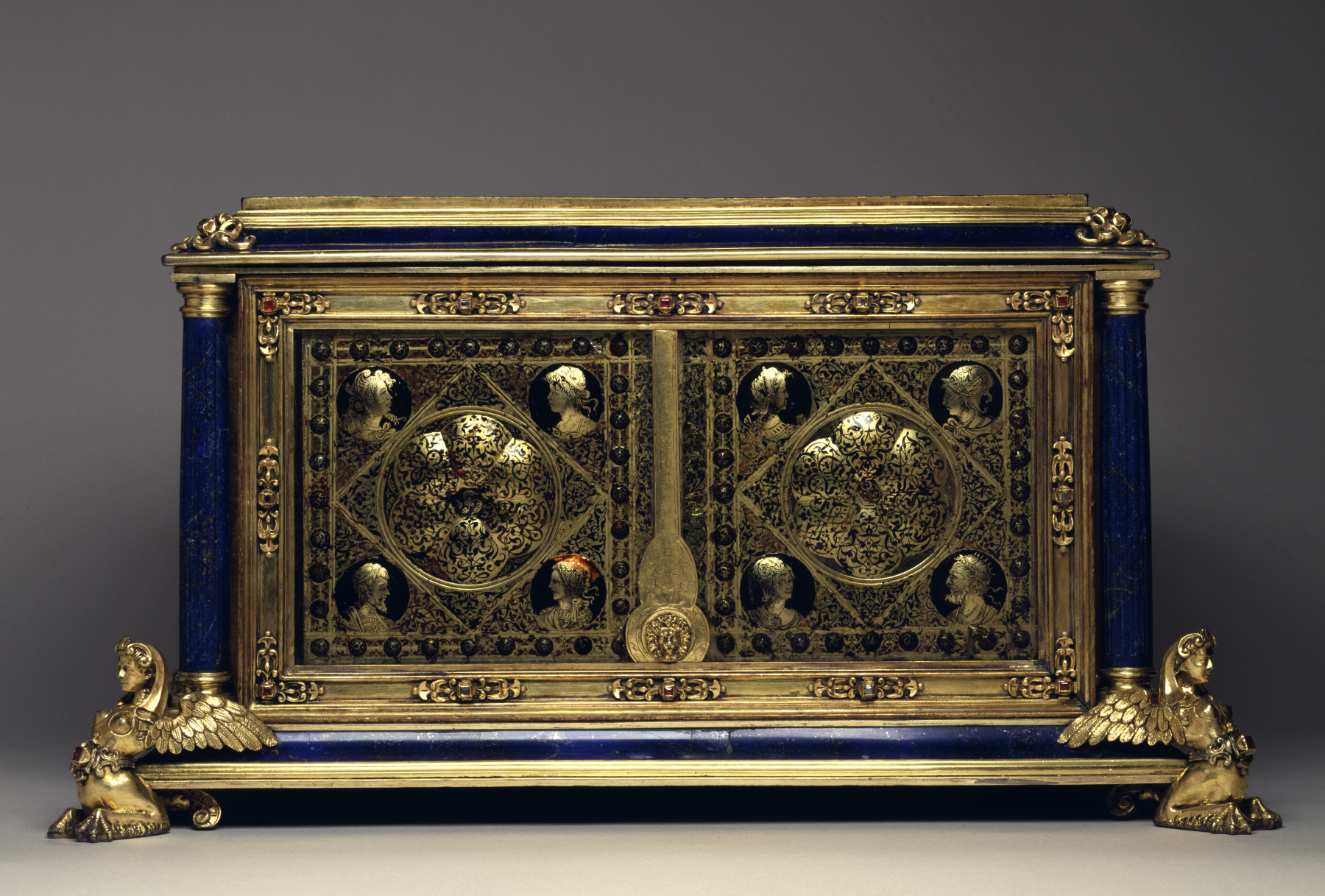Jewel Casket with Busts of Emperors
(Renaissance Europe , 18th and 19th Centuries )
Splendid caskets were a specialty of Nuremberg goldsmiths in the later 1500s, particularly of Wenzel Jamnitzer (1507-1585) and his family. They were typically commissioned as presents for noblewomen for the safekeeping of small precious objects and but were themselves display pieces.
The glass plaques are of the period and are finely executed in the reverse painting technique to create a dazzling impression of gold filigree; however, the metal framing elements were largely replaced or newly constructed in the 1800s by the French goldsmith Alfred André. The feet in the shape of harpies are similar to the feet of other caskets by Jamnitzer; but related drawings by André suggest that these are his.
Provenance
Provenance (from the French provenir, 'to come from/forth') is the chronology of the ownership, custody, or location of a historical object. Learn more about provenance at the Walters.
Ferdinando Lorenzo Strozzi, Florence, by purchase or inheritance; Piero Strozzi, Florence, 1878, by inheritance; Raoul Heilbronner, Paris, by purchase; Henry Walters, Baltimore, 1909, by purchase, Walters Art Museum, 1931, by bequest.
Exhibitions
| 1982 | 3000 Years of Glass: Treasures from The Walters Art Gallery. The Walters Art Gallery, Baltimore. |
Geographies
France, Paris
(Place of Origin)
Germany, Nuremberg (Place of Origin)
Measurements
8 3/16 x 15 5/8 in. (20.8 x 39.7 cm)
Credit Line
Acquired by Henry Walters, 1909
Location in Museum
Accession Number
In libraries, galleries, museums, and archives, an accession number is a unique identifier assigned to each object in the collection.
In libraries, galleries, museums, and archives, an accession number is a unique identifier assigned to each object in the collection.
46.3


